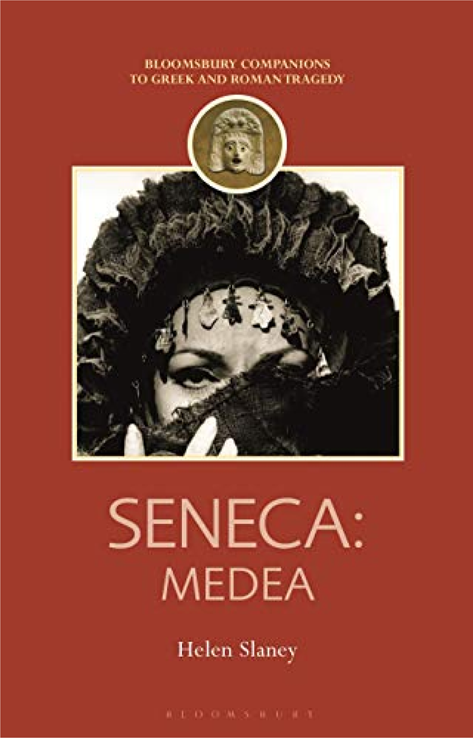
This book, as part of the ‘Bloomsbury Companions to Greek and Roman Tragedy’, offers an extensive, thoroughly researched, and sometimes unexpected range of perspectives on Seneca's Medea. The structure of the work is taut, with the first four chapters covering the usual topics for an introductory volume, viz the play in its historic and generic context, the plot in its mythological context, key themes, and features of style.
Alongside the traditional historical readings of Seneca's tragedy, such as comparisons with contemporary imperial figures, Slaney draws on the entire Senecan corpus to inform readings of the play in its own time; there is a focus on his Stoic essays, and a particularly striking section against the traditional reading of Medea's anger and actions as a negative exemplum (pp.7-8). Slaney is happy to present contradictory readings without dictating conclusions; this is one of the book's strongest features.
The second chapter, exploring the inheritance, Senecan innovations, and later reception of the Medea myth is similarly expansive, covering familiar intertextual references to Euripides, Ovid, and Apollonius Rhodius. Among these, the identification of Seneca's Medea as a mid-point in a specifically Roman tradition, for instance the significance of the Argo as prima ratis (pp.43-45), is compelling and a neat illustration of the concept of intertext. The real highlight of the chapter is the inclusion of a detailed exploration of Greek and Roman artistic representations of the Medea myth, given equality with literary readings.
Three key themes are selected for particular exploration: repetition and return; the natural world; metatheatre. Of these Slaney is best on the natural world, as she draws together and compares examples from across the play. The section on metatheatre was ripe for development into a discussion on Roman theatre more generally, and was perhaps a missed opportunity, but nonetheless could provide a good starting point for further investigation. In the fourth chapter, Slaney passionately argues against perceptions of Seneca's Latin as bombastic. She makes emphatic use of word frequency analysis, with focus both on the impact of repeated use, and the totemic power of a single word.
However, it is in the final section of the fourth chapter, as well as the two following, that this work departs from what is typically expected of a general introduction. Slaney has a background in Reception Studies, and employs detailed explorations of non-classical translations and stagings to illuminate her reading of Seneca. For instance, the section on the first English translation (Studley, 1566) is 11 pages long (pp.108-118), and follows a narrative on how Studley's verbosity changed perceptions of Seneca's Latin. Similarly, a promising chapter on ‘Witchcraft and Stagecraft’ (pp.119-139) is initially informative on Roman attitudes regarding witchcraft, but then follows a long diversion on French theatre and specifically Corneille's 1635 staging of Medée. This is successful as a close reading between Seneca and Corneille, but incongruous as a chapter within a general introduction, and not necessarily of interest to the Classicist, who may have preferred a chapter on comparisons between Seneca and Euripides.
The final chapter seeks to define Seneca's version of the myth within the web of intertext, and among the multiple modern re-readings and re-stagings. Here the lighter touch, covering a greater number of examples and across more artistic genres, but in less detail, is welcome, and encourages an appreciation for the uniquely Senecan elements of the Medea myth. This style is more within the remit of a general introduction.
This book is eminently suitable for the undergraduate reading Seneca or exploring Reception, and I would suggest that the first four chapters would be useful for a student in secondary education. Parts of the book would even benefit those reading Euripides’ version of the myth, or Seneca's letters, as his philosophy is often linked to his creative output. The extensive notes and bibliography also provide many opportunities for further exploration to interested readers.


